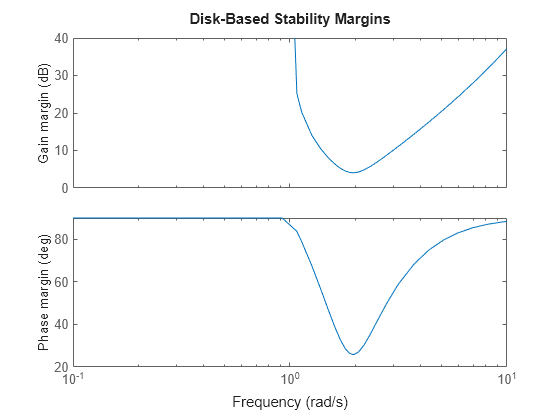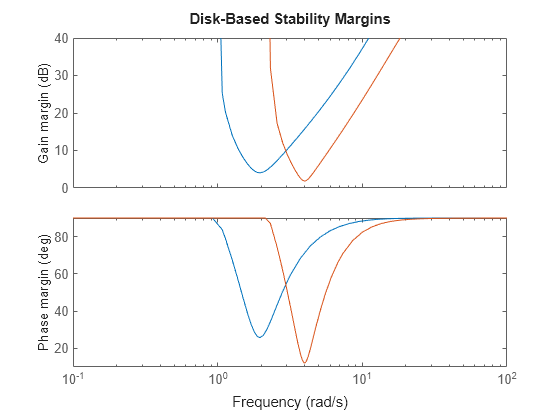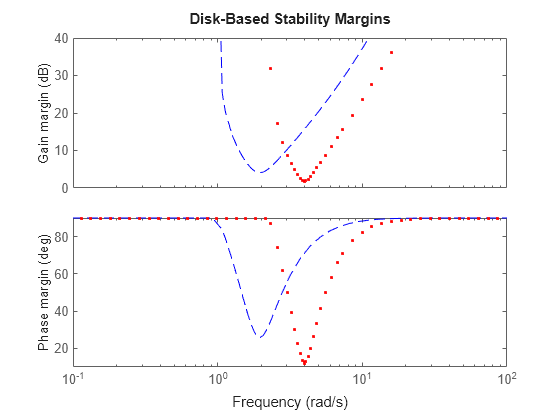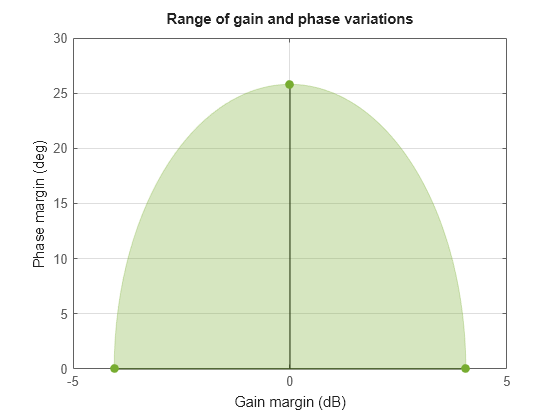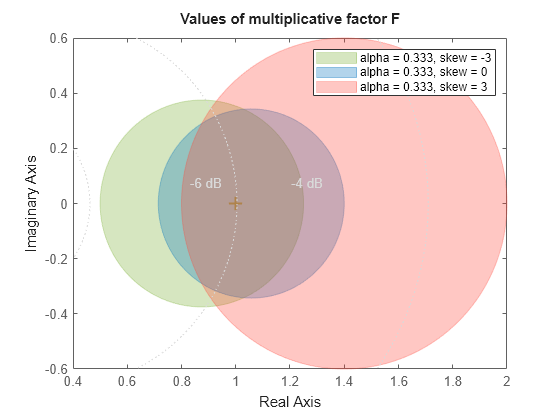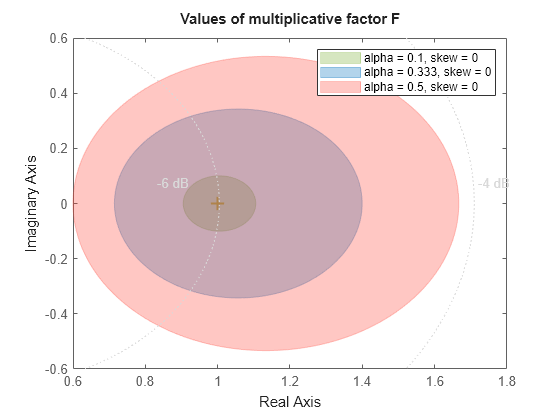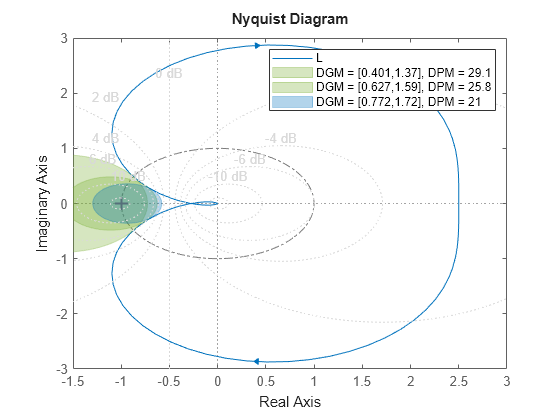diskmarginplot
Visualize disk-based stability margins
Syntax
Description
Margins as a Function of Frequency
diskmarginplot( plots the disk-based gain
and phase margins for the SISO or MIMO negative feedback loop
L)feedback(L,eye(N)), where N is the number of
inputs and outputs in the open-loop response L.

For MIMO responses, diskmarginplot plots the multiloop disk
margins. The disk-based gain margin at each frequency is ±GM, where
GM is the value shown in the plot in dB. Similarly, the disk-based
phase margin is ±PM degrees, where PM is the value
shown on the plot. For details about disk-based gain and phase margins, see diskmargin.
diskmarginplot(___, plots
the disk-based gain and phase margins computed using the skew sigma)sigma
to bias the gain variation toward gain increase (sigma > 0) or gain
decrease (sigma < 0). If you have used
diskmargin to obtain disk-based margins with some particular
sigma, you can use this syntax to see the frequency dependence of
the margins at that sigma value. For sigma ≠ 0,
the plotted value is GM = min(gmax,1/max(0,gmin)). In other words, the
plot shows the largest amount of gain change [1/GM,GM] that fits within
the disk-based gain margin [gmin,gmax] of the system at the specified
sigma.
diskmarginplot(___, plots the
margins at the frequencies specified by w)w.
If
wis a cell array of the form{wmin,wmax}, then the plot shows the margins at frequencies ranging betweenwminandwmax.If
wis a vector of frequencies, then the plot shows the margins at each specified frequency.
Range of Gain and Phase Variations
diskmarginplot( plots the range of
simultaneous gain and phase variations corresponding to a disk-based gain margin. The plot
also shows the maximum gain-only and phase-only variations (this disk-based gain and phase
margins). DGM)DGM is a vector of the form [gmin,gmax].
The gain margin DGM can also be a scalar, which is equivalent to
specifying the symmetric gain variation [1/DGM,DGM]. To plot the ranges
for multiple disk-based gain margins at once, use a two-column matrix of the form
[gmin1,gmax1;...;gminN,gmaxN]. For more information about disk-based
gain margins, see diskmargin.
diskmarginplot( plots the
complex-valued disk of modeled gain and phase variations corresponding to the disk-based
gain margin DGM,'disk')DGM. For details about how disk-margin analysis models
gain and phase variations, see Stability Analysis Using Disk Margins.
diskmarginplot( plots the
exclusion region in the Nyquist plane corresponding to the disk margin
DGM,'nyquist')DGM. The requirement that the closed-loop system remain stable for
gain or phase variations within the disk corresponding to DGM amounts
to a requirement that the open-loop response remain outside a disk-shaped exclusion region
in the Nyquist plane. For more information, see Stability Analysis Using Disk Margins.
diskmarginplot(
plots the range of gain and phase variations corresponding to the disk size
alpha,sigma,___)alpha and skew sigma. If either
alpha or sigma is a vector, then the plot
includes the ranges for all specified values. If both alpha and
sigma are vectors, then the plot includes the ranges for the pairs
alpha1,sigma1;...;alphaN,sigmaN.
To plot the modeled uncertainty disk corresponding to
alpha,sigma, use this syntax with the
'disk' flag. To plot the corresponding exclusion disk in the Nyquist
plane, use this syntax with the 'nyquist' flag.
Plot on Specified Axes
diskmarginplot( draws a
plot on the axes specified by an axes handle (AX,___)axes or a
UIaxes object). Use this argument to specify axes when creating apps in
Develop Apps Using App Designer. You can use this argument with any of the
previous syntaxes to draw any of the plots that diskmarginplot can
generate.
Examples
Input Arguments
References
[1] Seiler, Peter, Andrew Packard, and Pascal Gahinet. “An Introduction to Disk Margins [Lecture Notes].” IEEE Control Systems Magazine 40, no. 5 (October 2020): 78–95.
Version History
Introduced in R2020a
See Also
getDGM | wcdiskmarginplot | diskmargin | diskmarginoptions | gm2dm | umargin
